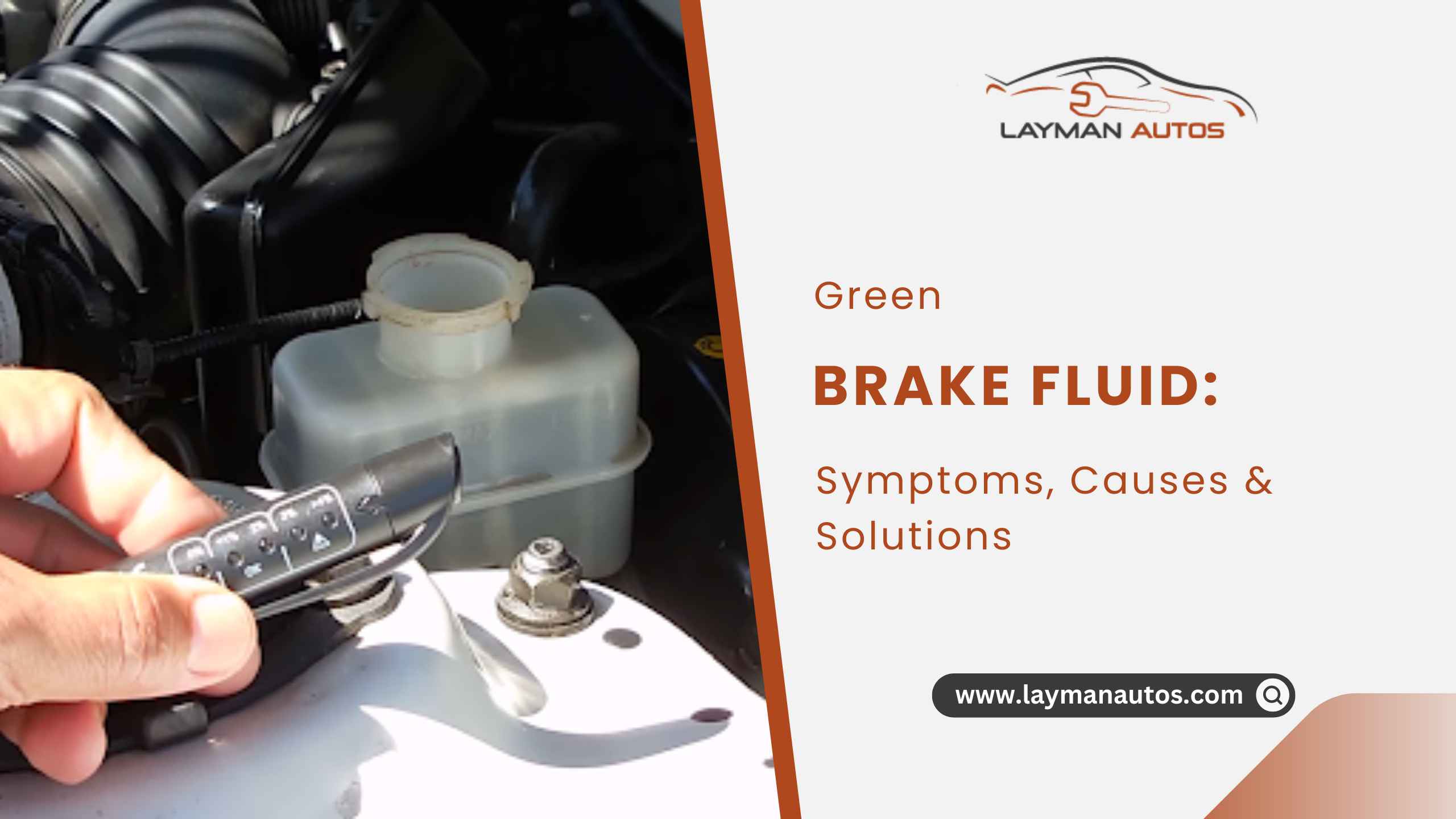Green Brake Fluid: Symptoms, Causes, Solution
There are a variety of issues that might arise during the course of vehicle ownership. Although some, like determining the correct color of brake fluid. You should never take the brakes for granted. Pay special attention to the color of the brake fluid since it might provide important information about your car. If you fail to do the necessary inspections, you run the risk of losing control of your vehicle and having an accident.
If you are curious to know why is my brake fluid green? this indicates the brake fluid is getting dirty. When the color of fluid turns green from yellow there is a need to replace it.
We all know that brake fluid, also known as motor oil, can leak out of a car after some time of use; during the leaking process, you could notice a color variation between the two fluids, making it difficult to tell them apart.
Brake fluid is typically a transparent fluid, but when it spills, it becomes a distinctly green tint. But have you ever wondered why, exactly, green brake fluid indicates a leak? We will thus provide you with all the information you need about it here.
Does the Color of The Brake Fluid Matter?
One must first understand what brake fluid is and why its color is significant before delving into the specifics. Brake fluid is crucial to a vehicle’s braking system. It’s a chemical solution in liquid form, the kind of hydraulic fluid used in most automobiles and utilized for their hydraulic brakes and clutch.
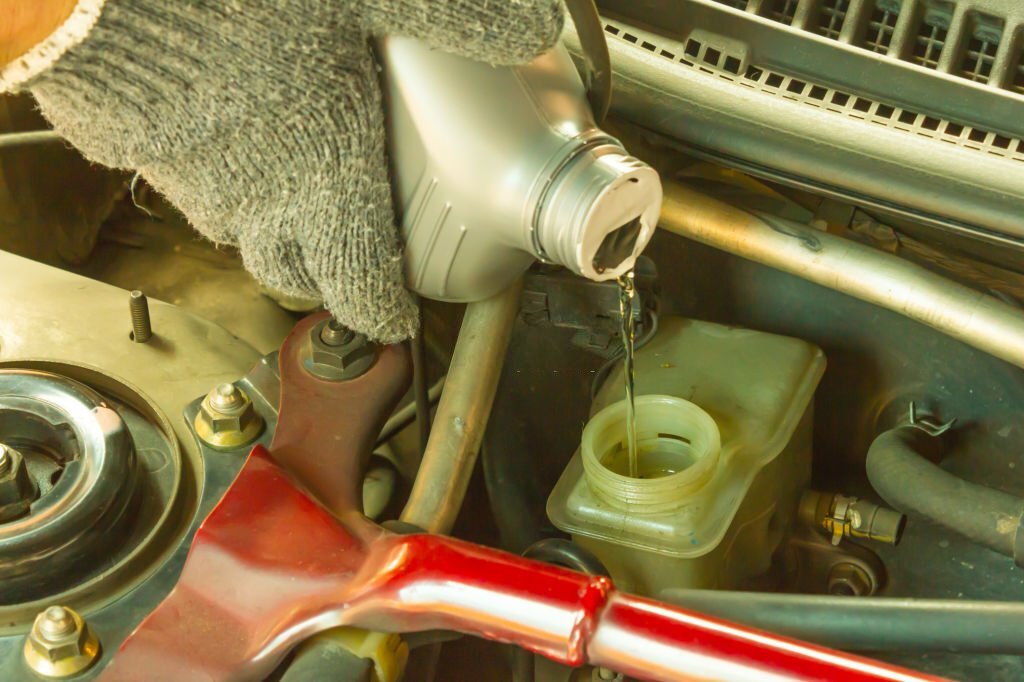
Changing force into pressure and amplifying braking force are two of its most common applications. By way of explanation, when a driver presses the brake pedal, the correct braking fluid transmits that force, in the form of pressure, to both brakes, allowing the car to come to a halt.
Is Green Brake Fluid Bad?
The need to change your brake fluid may be seen when the fluid changes color from clear to green. Green brake fluid indicates the presence of a chemical similar to algae; if the fluid is green and clear, it may continue to function for a while, but it’s still time to change the fluid.
Green brake fluid is a sign of polluted brake fluid, which can cause the braking system to fail or cause the driver to lose brake control. When the green fluid becomes black, it indicates increased contamination and serves as a warning that a fluid change is necessary to prevent an accident. If the brake fluid is green, it’s time to change it.
What Color Should Your Brake Fluid Be?
There is a little yellow tint to the clear brake fluid. Dot 3 brake fluid color, Dot 4 brake fluid color, and Dot 5 brake fluid color are all the same and may all be used interchangeably. A reservoir inspection should reveal some haziness in the fluid, but it should be rather evident given how long this color scheme will last.
The brake fluid in your car’s reservoir will gradually turn from clear to the colour of black motor oil as you drive more frequently. If you check your automobile and see the brake fluid is a dark brown or black color, it’s time to get a new supply.
Dirt and filth in the brake fluid cause it to change color. It’s possible that water has built up in the reservoir, where it might react with the brake fluid and make it cloudy and less effective. Over five-year-old brake fluid will be darker and more sludgy in appearance. As quickly as possible, you should drain the fluid and refill it with fresh fluid.
Why is My Brake Fluid Green?
When you find your brake fluid to be green, it is probably because the fluid’s chemical components have degraded and attacked the brazed junction in the brake tubing, therefore contaminating the fluid. To put it more simply, if there’s enough copper in the fluid, it becomes green. This occurs when brakes are not checked frequently enough or when brake pads are not replaced properly.
Another possible cause of the fluid’s green color is the presence of moisture in the system. The fluid is hygroscopic, thus it may absorb and hold moisture. Brake fade, when the brakes don’t operate as effectively as they should due to overheating, can occur as the boiling point drops as the water content rises.
What to Do if Your Brake Fluid Is Green?
Inspecting your car regularly, either by yourself or with the help of a professional, can prevent you from ever having to deal with brake fluid that color. Altering the brake fluid is also part of a regular service. A green brake fluid color is a warning indicator that you need to get your brake fluid changed as soon as possible to prevent further damage to your vehicle.
To replace it yourself, you’ll need a baster to drain the old brake fluid and then pour in the fresh stuff. It’s crucial to keep going until you have brake fluid that is both transparent and yellow in color. It’s not immediately dangerous to drive about with green brake fluid, but you should have the problem fixed as quickly as possible.
Why Do You Need to Check the Brake Fluid Color?
How about a color guide for brake fluid? A vehicle’s braking system is only as good as its weakest link, and a key part of a dependable braking system is fresh, high-performance brake fluid. If your brake fluid has changed color, it means that it has absorbed dirt and debris from the braking system.
When you need your brakes the most, you run the risk of losing control of your bike because dirty brake fluid doesn’t operate as well as new, clear brake fluid.
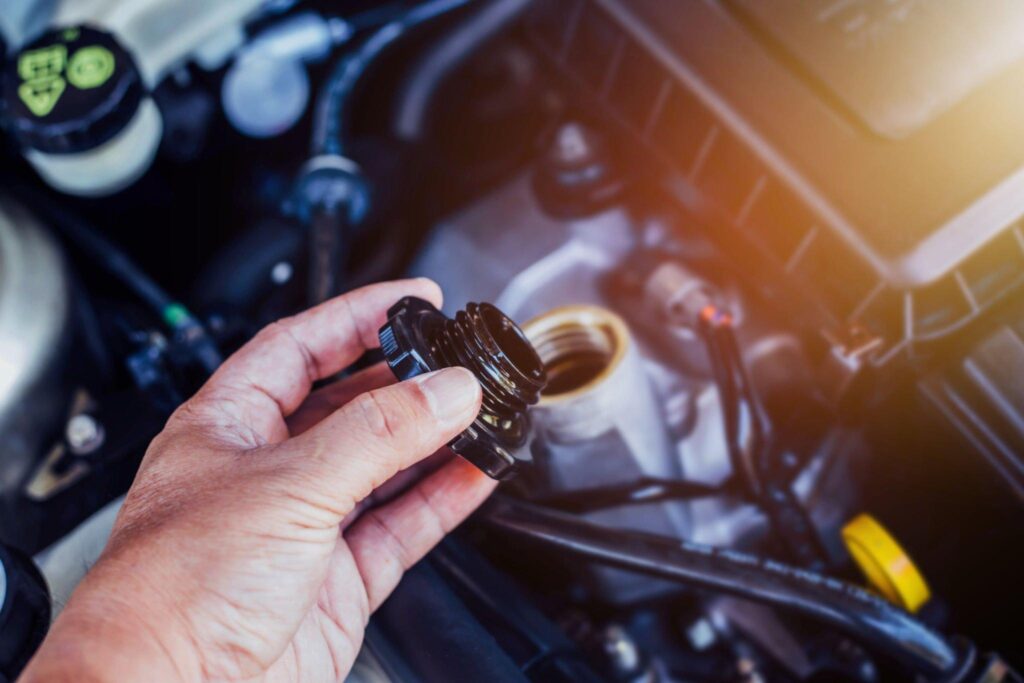
The brake fluid reservoir is located within the primary brake system. Brake fluid is stored here before being sent to the cylinder and eventually the wheels. If you are harsh on the brakes, the fluid will become polluted sooner. And after a short period of time, even if you don’t drive very hard, pollutants will begin to accumulate in your braking fluid.
Moisture in the Brake Fluid
Moisture in the brake fluid is also hazardous for the braking system. Miniscule bits of rubber that have flaked off the brake lines will also dissolve into the fluid, making an already bad situation even worse. Brake fluid can alter in color due to heat and time.
Many uses will cause this to change color from clear to yellow and finally gold. Despite turning a golden hue, the fluid’s clarity ensures it will continue to function properly. Despite the fluid’s golden hue, its performance may no longer be optimal. Most of the time, once the brake fluid has become gold, it won’t take long until it turns green again. If your braking fluid has become green, it may be because it has gotten contaminated with algae.
When the brake fluid turns a certain color, it’s time to get it changed. As the fluid becomes increasingly tainted, its color will change from green to brown and then black.
Since brake fluid is contained within the reservoir and circulates throughout the braking system, checking its color is a difficult task. If you want to make sure everything is in working order, you’ll need to take a look under the hood and open the fluid reservoir. You can tell you’re looking at black brake fluid because of how visibly dark and dirty it looks.
Dirty brake Fluid Symptoms
Below are a few symptoms indicating that the brake fluid is getting dirty.
- The mushy sensation of the brake pedal.
- To get the brakes to work, you have to press down on them repeatedly.
- The brakes are weak, even when pressed really hard.
Any of these problems indicates that your braking fluid is severely polluted and needs to be changed immediately.
How Frequently Should Brake Fluid Be Checked?
Brake fluid should be checked on a monthly basis, or more frequently if you drive frequently. Keep an eye on the brake fluid’s shade and how much is in the reservoir. Also, make sure the reservoir is free of any leaks.
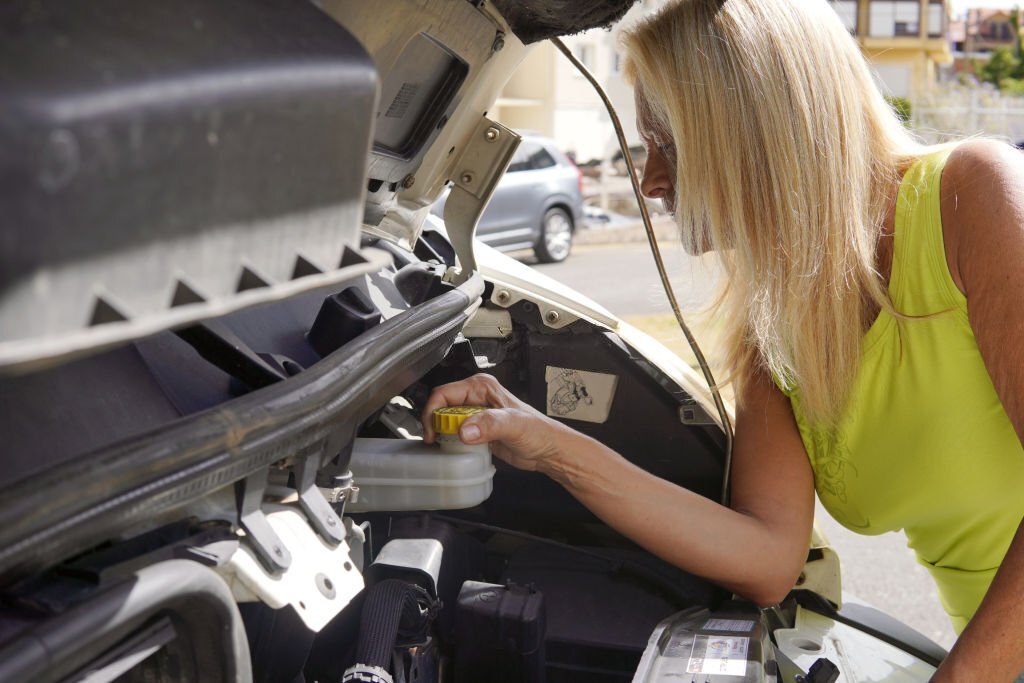
Determine how simple or complicated your brakes are to use. Check the brake fluid and any other components of the braking system immediately if you experience any resistance or if you are not getting the optimal reaction.
Alternatively, you might seek the advice of a professional technician. All brake services should include a visual inspection of the braking fluid, as well as the replacement of worn brake pads and the precise re-balancing of the rotors.
When Should Brake Fluid be Replaced?
Although braking fluid can remain viable for years in a sealed system, atmospheric moisture can enter the system through hoses and other openings. The sensation of the brake pedal and how quickly heat is dissipated after repeated stops can both be influenced by unclean or contaminated brake fluid.
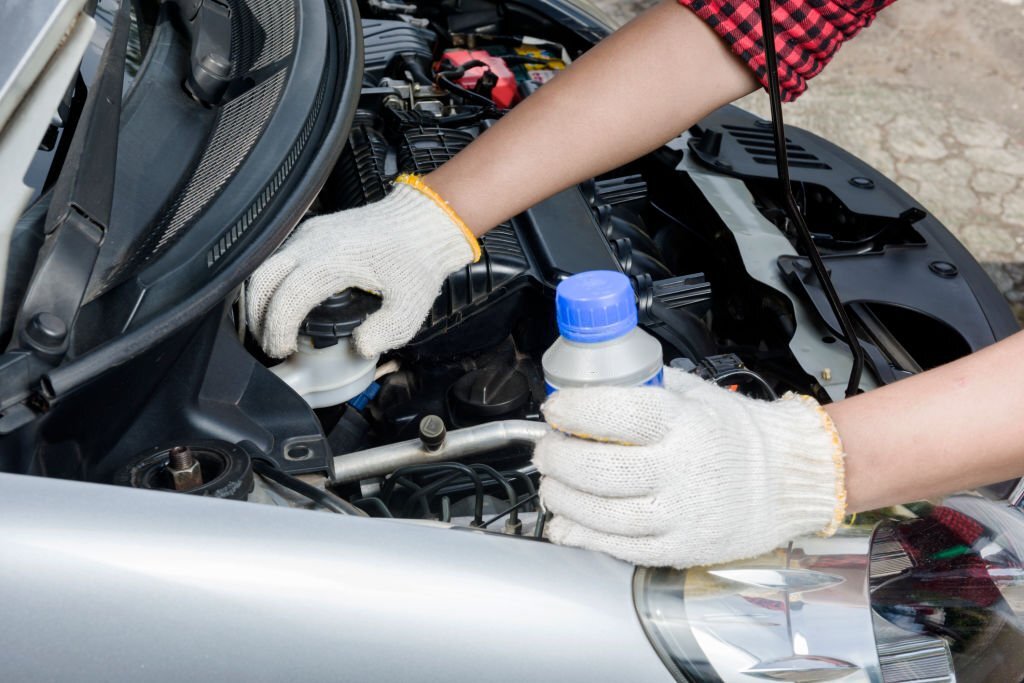
As the braking system heats up during hard stops, the stopping power might degrade if water has gotten into the brake lines and lowered the boiling point of the fluid. Also, the dampness might eventually corrode the inside of the brake lines, calipers, master cylinder, and other parts.
There is obvious value in keeping up with maintenance, since it may cost $100 or less to flush and replace brake fluid on many cars, but replacing corroded brake lines, brake calipers, and other brake parts can run many hundreds of dollars.
Having your brake fluid analyzed for moisture content is recommended once every few years, or no more than once every five years if you reside in a particularly humid region. According to some sources, the brake old fluid must be changed with new fluid after every two years. Whereas according to some, it should be done every 3 years or 45,000 miles.
Braking systems in places that experience cold weather should be inspected periodically since road salt and other impurities can contaminate the brake fluid.
Guide to the Colors of Brake Fluid
A bottle of brake fluid must be purchased whenever a master cylinder or brake pad is changed. Brake oils can be categorized as either DOT 3, DOT 4, or DOT 5. There is a wide range of hues among these braking fluids. All grades of “DOT” brake fluid (DOT 3, DOT 4, and DOT 5) appear to be the same shade of brown.
As time passes, the color will fade to gray or brown. Constant exposure to high temperatures, degrading rubber brake lines, damp environments, and the passage of time all contribute to a gradual darkening of the brake fluid. In this brake fluid color guide, we’ll go through the many options for car brake fluid.
DOT 3
Poly glycol is the main ingredient in DOT 3 brake fluid. It was one of the earliest braking fluids created, but as more modern brake fluids have become available, its use has declined. The minimum boiling temperature is 205 degrees Celsius. A temperature of 140 degrees Celsius is required to bring it to a boil when wet. The new DOT 3 brake fluid is a transparent blue tint. Besides DOT 5, it works well with all other types of braking fluid.
DOT 4
Again, poly glycol is the main ingredient in this braking fluid. It may reach a minimum of 230 degrees Celsius when dry and 155 degrees Celsius when wet, respectively, during the boiling process. Brake fluid is utilized in larger and medium-sized contemporary cars.
As an added bonus, it works wonderfully for cars that tow trailers, have anti-lock brake systems, or travel at high altitudes. Is Dot 4 brake fluid green? DOT 4 brake fluid is almost perfectly transparent, with a hint of yellow in its composition.
DOT 5
The fluid in your brakes is silicone-based. Its wet boiling point is 180 degrees Celsius, while its dry boiling point is 260 degrees Celsius. Used mostly on cars that will be sitting for extended periods of time, such as those used by the military or by weekend collectors. DOT 5.1, DOT 4, and DOT 3 braking fluids are incompatible with this fluid.
Frequently Asked Questions
Q: What Color Is Brake Fluid When It Leaks?
Initially transparent, brake fluid gradually turns from yellow to brown as it ages. People often mistake brake fluid for motor oil, although brake fluid has a much smoother feel. The brake fluid is the most likely culprit if you see a smooth fluid flowing from the car.
Brake fluid that has begun to leak is typically a transparent or amber color. Problems with the calipers, worn brake pads, loose bleeder valves, leakage in the master cylinder, and a malfunctioning ABS unit are all potential causes of brake fluid leaks.
Q: How Do You Know If You Have Contaminated Brake Fluid?
There are several indicators of poor brake fluid. For example, if the brakes become soft and mushy, stopping the automobile becomes more of an effort than usual. This happens when moisture in the brake fluid boils at high temperatures during hard braking, releasing air into the brake lines.
The color of the brake fluid might also indicate whether it has gone bad. Flawed brake fluid has a brown or black color. As time passes, the brake fluid darkens in color. Replacing it is necessary if you see that it has dimmed.
Q: What Will Happen If I Don’t Change the Brake Fluid?
When you don’t change the brake fluid, it takes in moisture from the air and causes the brakes to fail. Corrosion and rust of metal parts may result from using braking fluid that has been exposed to moisture. Because of this, brake fluid becomes tainted with rust particles. Your vehicle’s stopping ability will suffer if you don’t maintain it with regular brake fluid changes.
For the sake of your braking system’s security, you should often check the brake fluid. When you’re done with your braking system check, make sure the reservoir cover is securely secured. To prevent filth, debris, and dirt from entering the brake system, make sure it is closed properly.
Conclusion
The typical color of brake fluid is transparent yellow or gold. Then why is my brake fluid green? As the fluids mature, their hue changes to reflect the debris and moisture they’ve taken in from their surroundings. The need to change the brake fluid will vary based on the vehicle you drive and how often you need to use the brakes.
Be sure to keep track of the fluid colors for the brakes. If you drive with contaminated brake fluid for a long period of time, you risk damaging your vehicle’s braking system and its components. To protect the safety of your vehicle, check the brake fluid color and get it changed if necessary, or have a professional technician do it.

